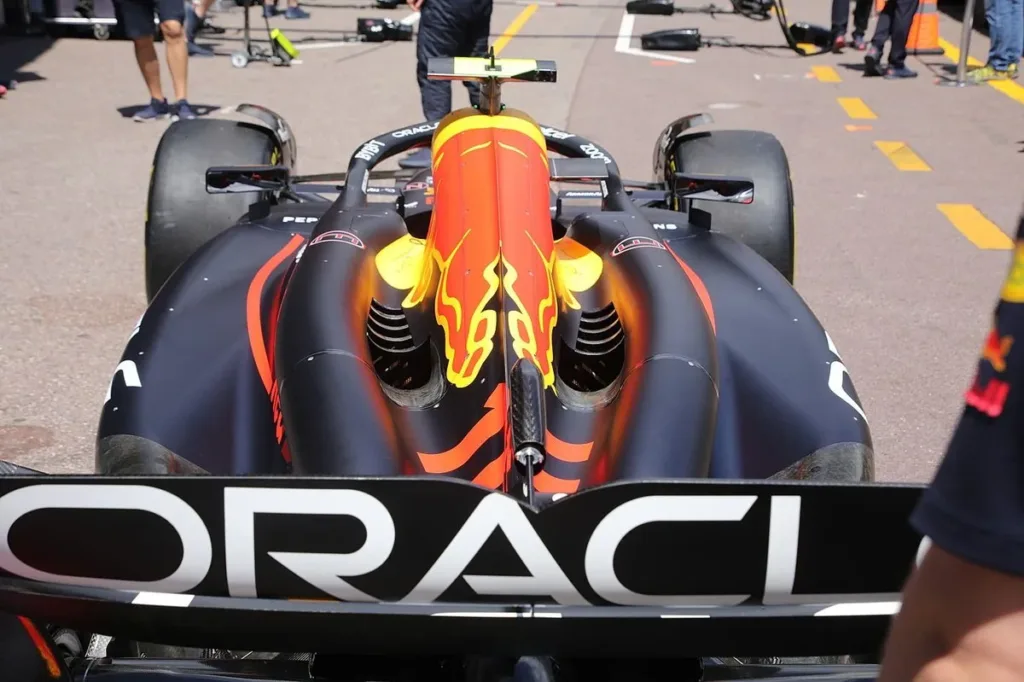Formula 1 News: Red Bull Focuses on Cooling Upgrades to Gain Performance Edge
In the world of Formula 1 car upgrades, it’s not always about flashy new wings or sidepod concepts. Sometimes, it’s the finer details that make all the difference. For Red Bull Racing, getting close to the development ceiling of the RB20 means honing in on the smaller aspects, including an often-overlooked area: cooling holes.
As the team revealed at the Spanish Grand Prix, its latest upgrade included refinements to the sidepod inlets, motivated by a desire to run the fewest “exit louvre openings.” While it may not be the most thrilling topic, Red Bull chief engineer Paul Monaghan emphasized the importance of shut-down exit holes at the rear of the car, stating that it can make a significant difference in grid positions.
“You’ll be surprised how sensitive, I dare say, everybody is,” Monaghan said. “You start opening holes in the back of the bodywork, and you spill tumbling dirty air towards the beam wing, floor, edges, and that type of thing. And it hurts.”
With the team locked in a tight battle with its rivals, every gain counts, and Red Bull has made a concerted effort to perfect its cooling system. What works at one track may not work at another, so the team tailors its solutions to each race, taking into account factors like temperature and altitude.
The RB20’s innovative cooling layout, featuring an overbite sidepod design with horizontal and vertical inlets, has given Red Bull the flexibility to make changes throughout the season. The team has made adjustments to the layout, starting in Japan, and has experimented with different inlet and sidepod configurations.
Heat rejection is another crucial aspect of the puzzle, and Red Bull has employed various strategies, including the use of louvre panels, to manage heat without compromising aerodynamic performance. The team’s unique internal layout, featuring smaller coolers side-saddled behind the halo’s trailing leg, supplies cool air to the radiators and coolers.
For the Spanish Grand Prix, Red Bull introduced new bodywork, including changes to the rear cooling outlet, which may be used at specific events. This allows the team to trade cooling and aerodynamic performance, providing more opportunities to optimize its setup.
The focus on cooling upgrades may not be glamorous, but it’s a vital area of development for Red Bull Racing. By honing in on the finer details, the team can eke out precious performance gains, giving it an edge in the competitive world of Formula 1.
Formula 1 Autocentre: Understanding the Importance of Cooling in F1 Cars
When it comes to Formula 1 car upgrades, cooling is often overlooked in favor of more glamorous aerodynamic components. However, as Red Bull Racing’s recent focus on cooling holes and heat rejection demonstrates, it’s a critical aspect of performance.
At the Formula 1 autocentre, teams understand that cooling is not just about keeping the engine and components at the right temperature; it’s also about managing airflow and aerodynamic performance. A well-designed cooling system can provide a significant advantage, and Red Bull’s innovative approach is a testament to its importance.
Formula 1 News: Stay Up-to-Date with the Latest Developments
For more Formula 1 news, including updates on car upgrades, team developments, and race analysis, stay tuned to our website. With in-depth coverage of the world of Formula 1, we’ll keep you informed about the latest happenings in the sport.
🔗 Source
